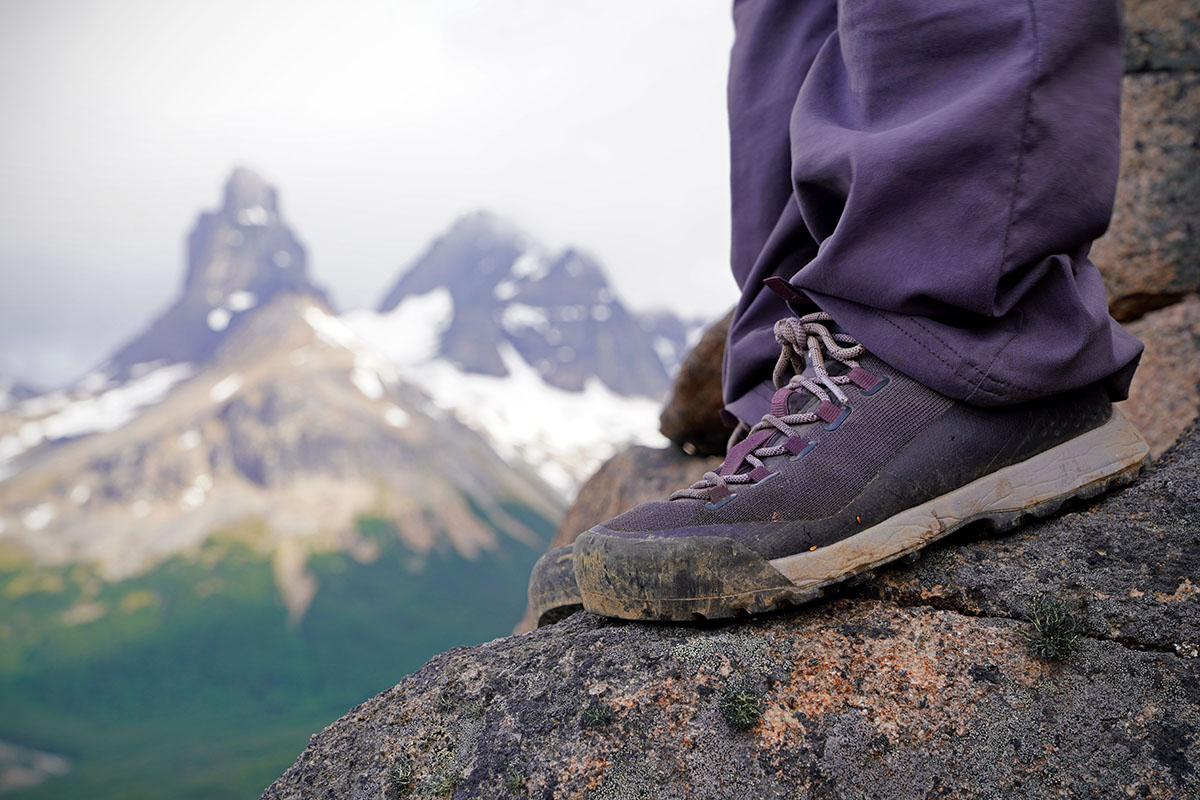
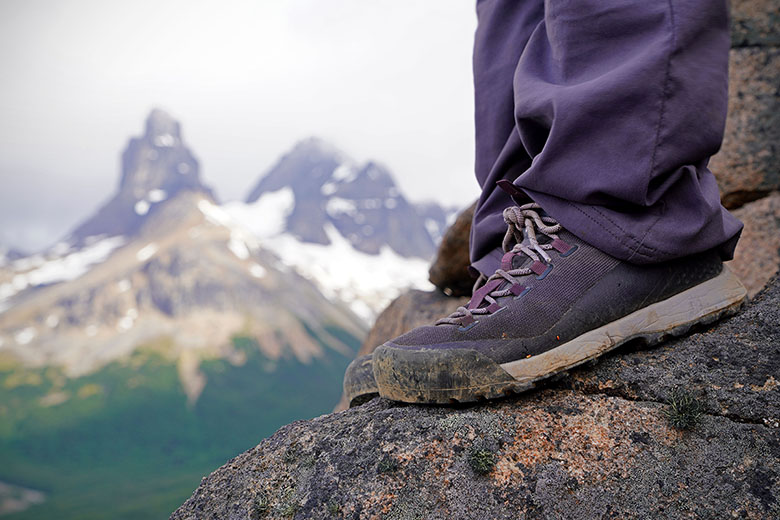
Switchback Travel


Switchback Travel
Price: $140
Weight: 1 lb. 3.9 oz. (women’s)
Waterproof: No
What we like: Breathable and comfortable for long days of hiking; surprisingly durable.
What we don’t: Not a great technical climber; sock-like liner makes the shoe difficult to get on.
See the Men's Black Diamond Mission LT See the Women's Black Diamond Mission LT
Black Diamond has long been known for climbing gear, but it wasn’t until this year that they broke into the approach shoe market. Now, the Salt Lake City-based company features four approach models in their lineup: two lifestyle and two technical offerings. The Mission LT is in the latter as their hiking-focused shoe built for fast and light approaches. We took the Mission hiking in Patagonia and out to Smith Rock for days of cragging, and below we break down its hiking performance, climbing performance, weight, traction, durability, sizing and fit, and more. To see how it stacks up, see our article on the best approach shoes.
The Black Diamond Mission LT is designed for long approaches both on trail and over technical terrain. Underfoot, it features a rockered sole, a nylon rock plate for protection, and sticky rubber with a tread built to tackle a variety of terrain. Further, the EnduroKnit upper lends impressive comfort and breathability for long days on the trail, and the sock-like fit keeps your foot snug and rocks and sand at bay. If you’re used to a standard hiking shoe, you’ll probably find the Mission LT to be noticeably stiff, which is in largely due to its rigid EVA midsole. However, we think Black Diamond did a great job overall balancing hiking comfort and climbing prowess (stiffness is a necessity in a climbing shoe).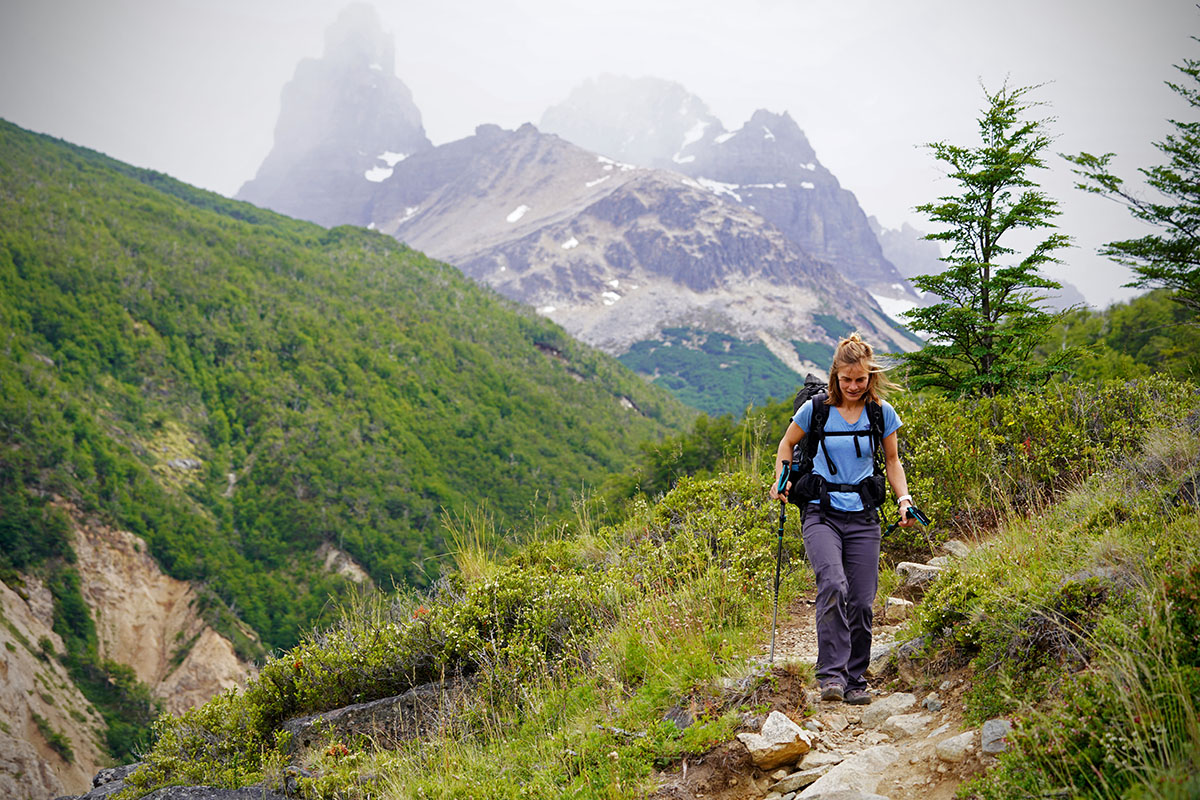
To truly test the Mission LT’s hiking chops, we took it on a backpacking trip in Patagonia’s Cerro Castillo region. At first, the shoe struck me as clunky and brick-like, but after a short break-in period, it loosened up and began to feel nimbler. The soft knit upper moved with my foot and didn’t form any pesky creases (a problem I recently experienced with the more rigid mesh on the Arc’teryx Konseal FL), and the shoes didn’t grow burdensome, even after 10 miles of hiking. On a section of boulder hopping and talus, the Mission LT was clearly in its element, offering great stability on uneven terrain and confidence-inspiring grip on the rock. It wasn’t until we had to walk for multiple miles on a gravel road that the shoe began to feel overbuilt and overly stiff—at that point, I would have gladly traded it for a more cushioned and flexible hiking shoe or trail runner. All in all, I wouldn’t recommend the Mission LT as a dedicated hiker, but it’s a good match for approaches that get technical and rocky.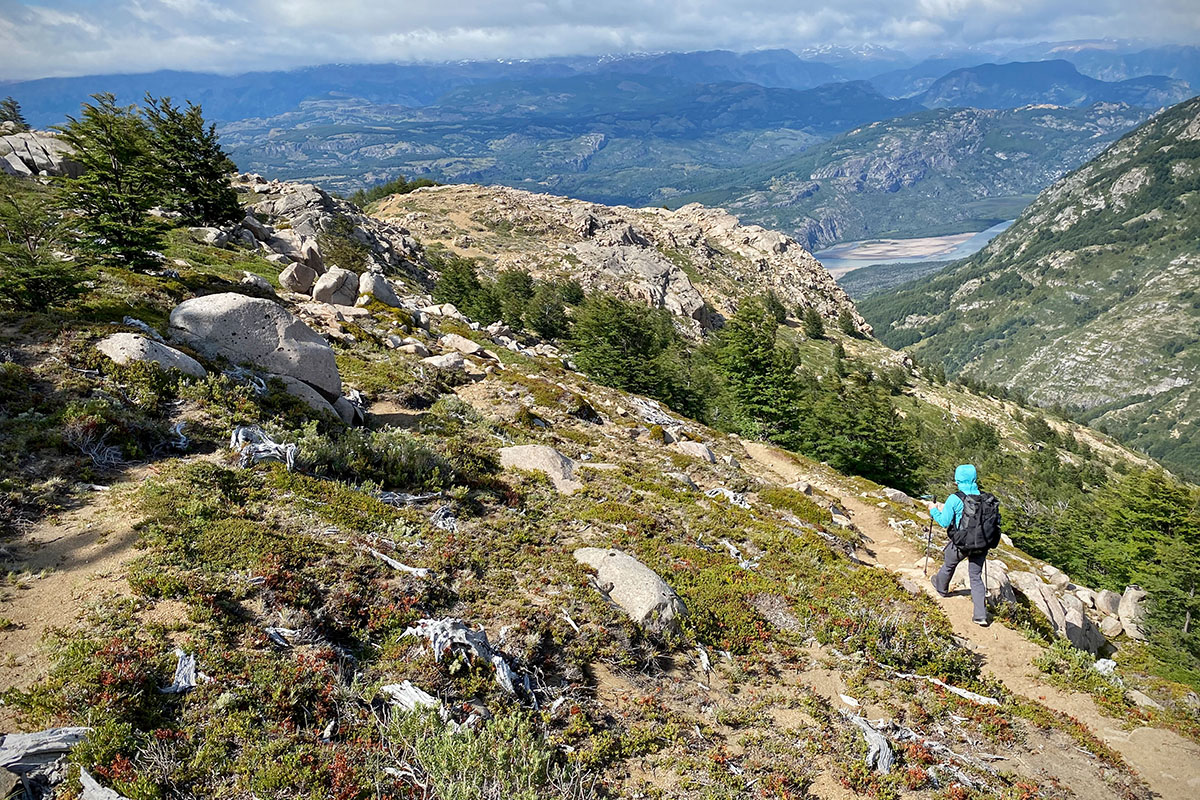
When the terrain turns steeper, the Mission LT is a fairly capable companion, on par with other popular approach shoes like the La Sportiva TX4. The outsole’s sticky rubber features a dotted tread at the forefoot with a smooth climbing zone around the edge, which is great for gripping rock. Further, you get a very clean, precise edge (akin to the TX4 and Arc’teryx Konseal FL), a wraparound rand for protection and grip, and to-the-toe lacing to snug down the shoe. On fairly mellow technical terrain, including boulder hopping that didn’t get more difficult than 4th class, the Mission LT got the job done well, providing security, ample precision, and great traction.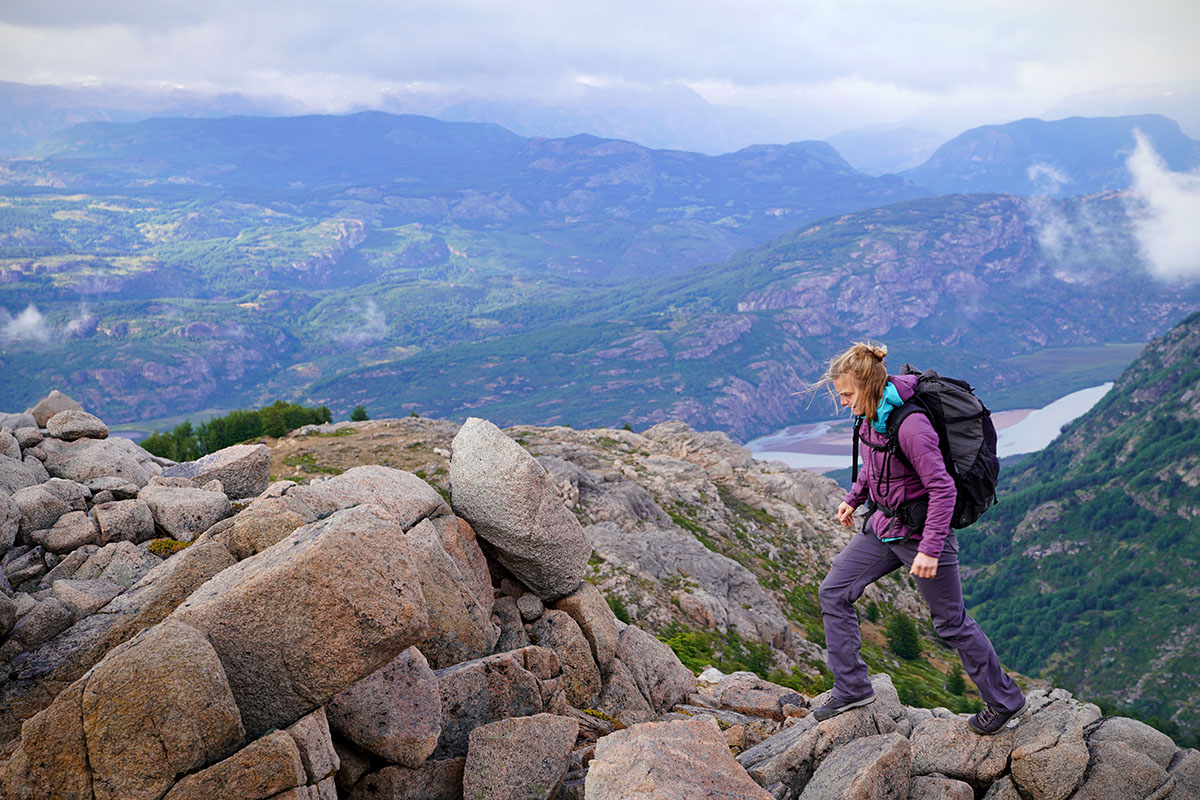
However, there are a few drawbacks to the Mission LT’s design. Because its toe box is built to maximize comfort on the trail, it’s a fairly roomy shoe, has a good deal of give, and is slightly rockered—none of which is great news for climbing. To better illustrate this, think about a standard climbing shoe: in general, these fit snugly, are made with fairly stiff upper materials, and have a downturned toe. For the Mission, this all translates to far less security on technical rock. If you’re looking for a minimalist approach shoe that’s built to scramble, BD’s own Technician is a much better bet and features a narrow, flat last and close fit. It's not as comfortable on the trail but considerably more precise for climbing.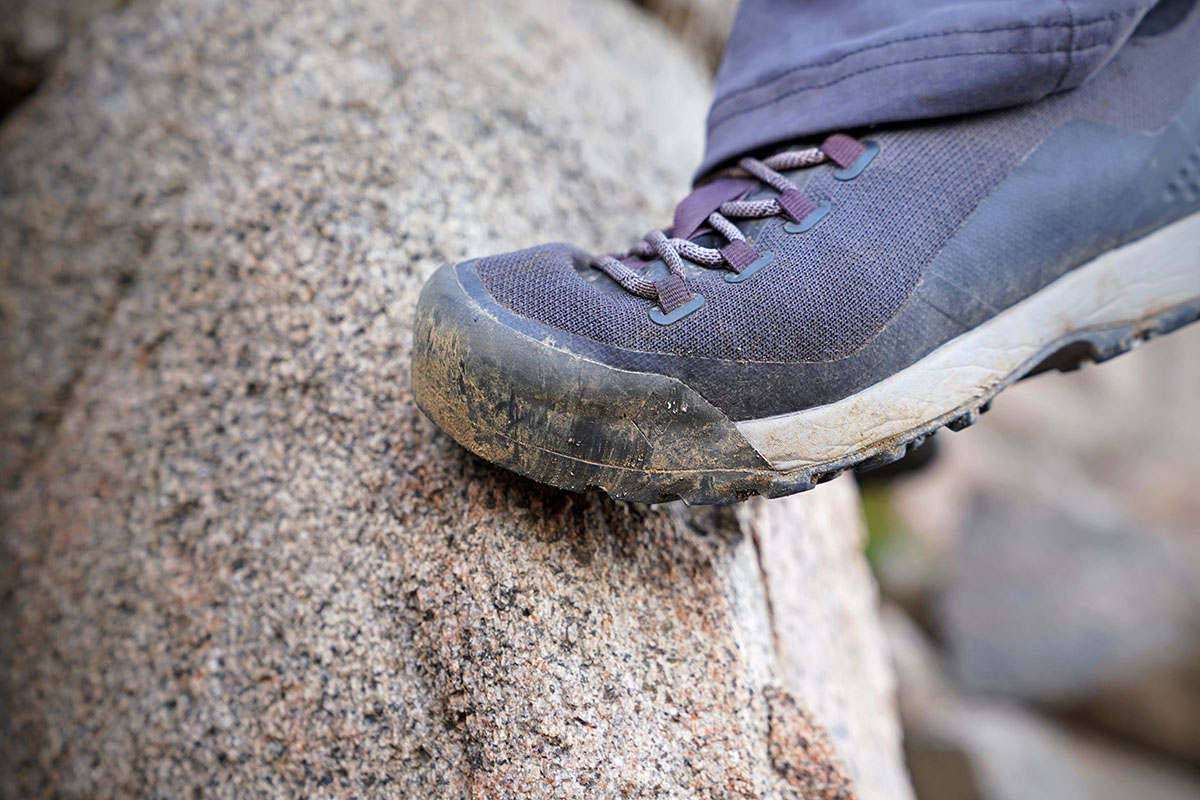
At 1 pound 3.9 ounces for a women’s size 9, the Mission LT falls on the lightweight end of the approach shoe spectrum. For comparison, it comes in lighter than the popular La Sportiva TX4 (1 lb. 4.8 oz.), TX3 (1 lb. 4 oz.), and Scarpa Crux (1 lb. 6.8 oz.). This makes it an excellent shoe to have on your feet mile after mile or hanging from your climbing harness pitch after pitch. Within the class of durable hikers and climbers, it’s beat out only by the 1-pound-2.4-ounce Arc’teryx Konseal FL, which has a similar one-piece synthetic upper but a slightly narrower build (read: better for climbing but less comfortable for hiking). If you want to cut serious weight, you can opt for a shoe like the La Sportiva TX2 (14.4 oz. for the pair) or Evolv Cruzer Psyche (1 lb. 0.8 oz.), but you’ll make significant sacrifices in durability, protection, and performance.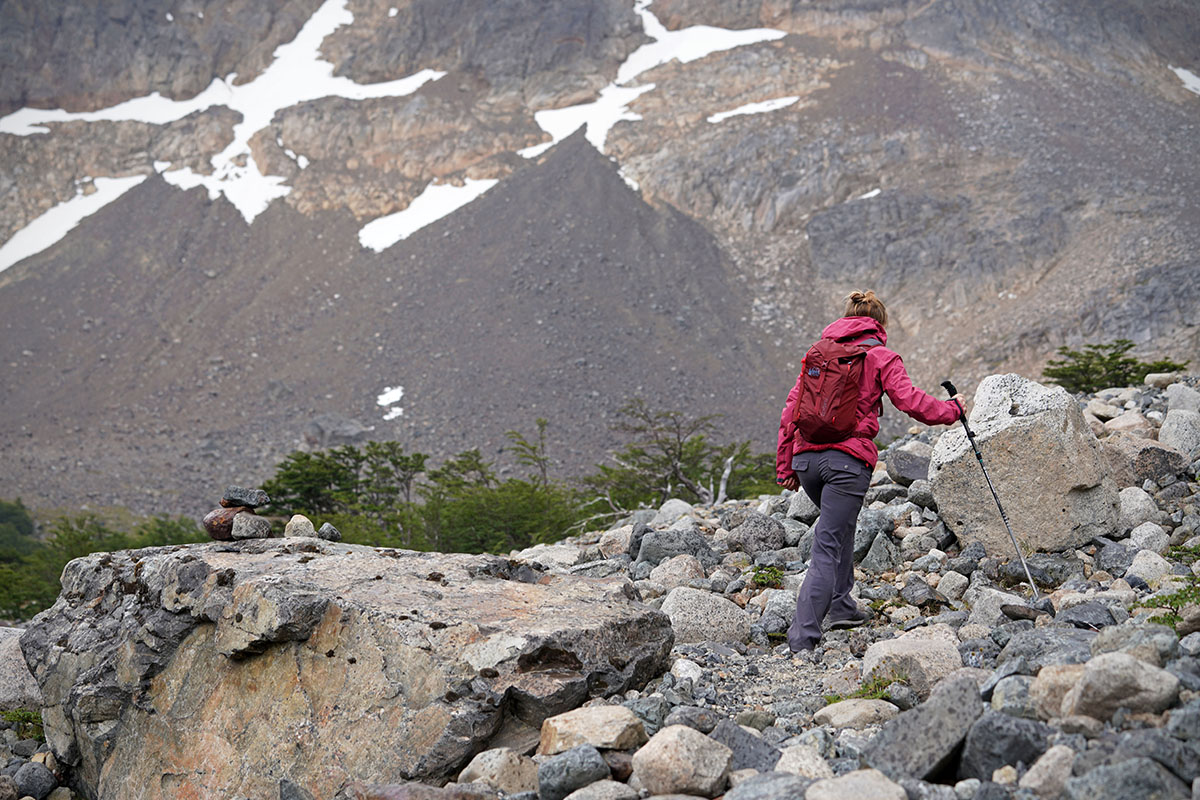
The Mission LT is made with Black Diamond’s proprietary and incredibly tacky BlackLabel-Mountain rubber. The tread offers security across a wide variety of terrain, with sharp, angular lugs in the rear (for grip on wet leaves, mud, and snow) that gradually round across the forefoot for better hold on smooth rock. Around the front edge is a smooth patch of rubber (often referred to as the “climbing zone”), which allows for precise edging. In practice, the Mission LT was confidence-inspiring and capable on dry and wet rock, mud, wet logs, and hardpacked dirt. For comparison, it offers similar overall traction to shoes like the La Sportiva TX4 and Arc’teryx Konseal FL, while models like the Five Ten Guide Tennie and BD’s Technician put a bigger emphasis on traction on rock with more rounded tread and shallower lugs.
With an air-permeable knit upper, the Black Diamond Mission LT places a premium on breathability and is a great choice for hot summer approaches and dry environments. In the event that it does get wet, the synthetic material wicks water fairly well, does not grow heavy, and will dry out more quickly than a leather or waterproof shoe. On the flipside, with very little in the way of water resistance, your feet will likely get wet with any amount of exposure to moisture. The good news is that most climbers only venture out in dry conditions, and the Mission LT is perfect for environments like the Utah desert or snow-free high Sierra. That said, while we rarely choose fully waterproof shoes for the lack of breathability, we do think a water-resistant leather shoe like the La Sportiva TX4 or Arc’teryx Konseal AR is more appropriate for true mountain conditions.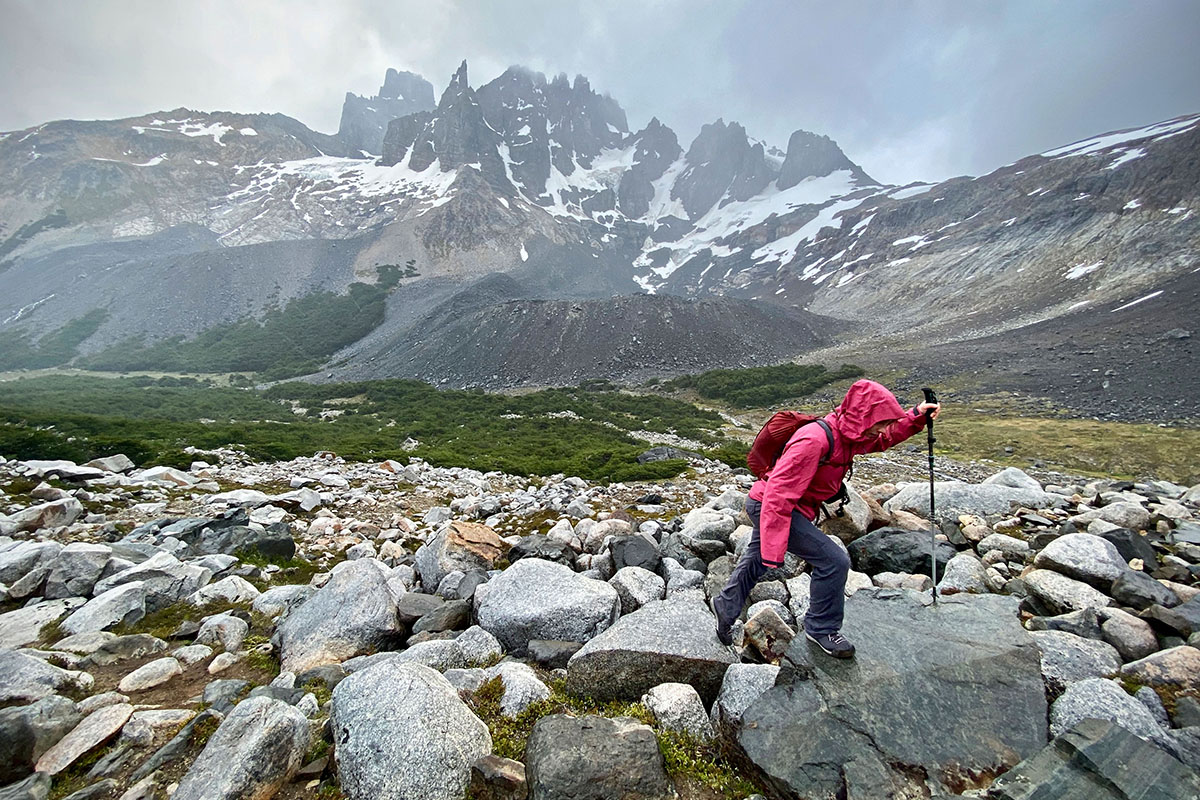
We’ve had quality issues with some of Black Diamond’s soft goods in the past, but their lineup of approach shoes is well-executed and stacks up nicely to the competition. The Mission LT in particular is clearly designed by climbers and for climbers with features like multiple webbing loops for various configurations of harness carry, a built-in tongue that won’t slip or bunch when you tighten the laces, and a breathable upper that excels on hot summer approaches. I was initially concerned about the toughness of the knit upper (especially compared to a leather model like the La Sportiva TX4), but it has proven to be impressively abrasion-resistant. After about 10 days of use, I’ve experienced no durability issues (we’ll be sure to update this review if any arise after a full season).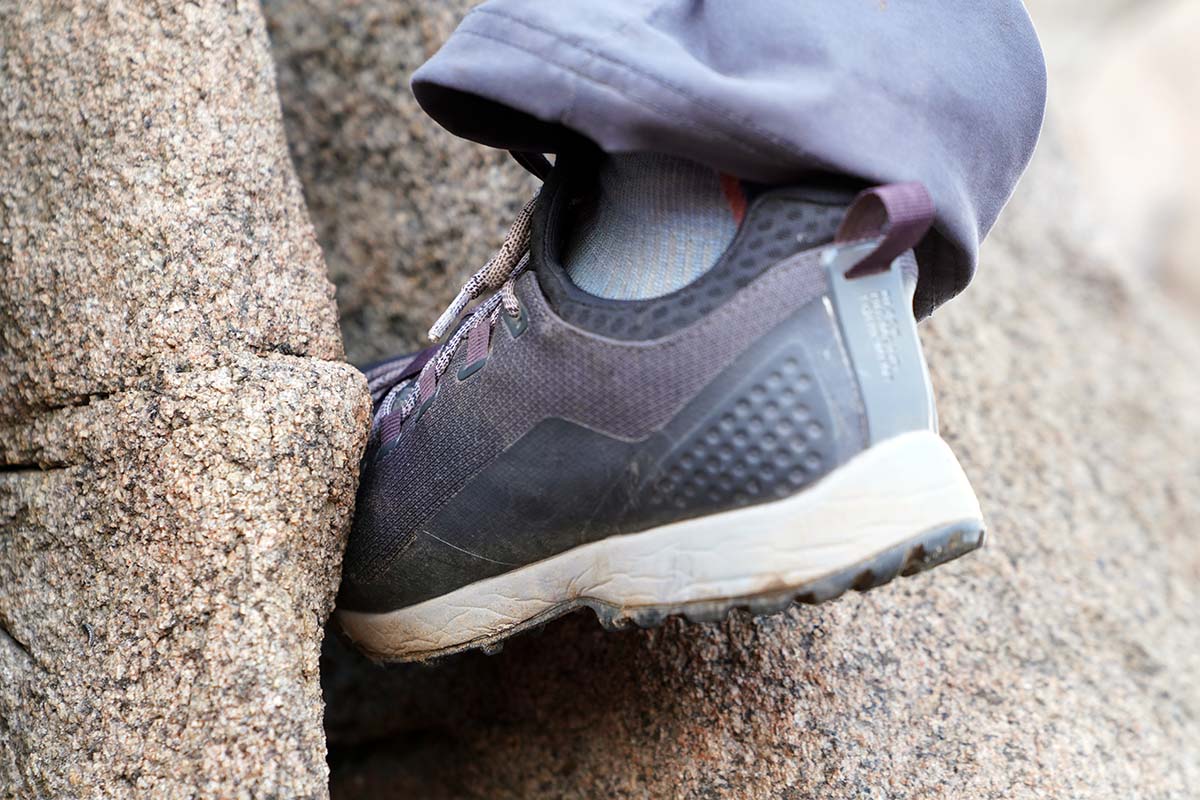
We experienced sizing issues with Black Diamond’s climbing shoe lineup, and the Mission LT is no different. I found my usual women’s 8.5 to be far too short and narrow, but the women’s 9 fits well. In general, expect to size up a half size unless you’re looking for a super snug fit. Widthwise, the Mission LT is fairly standard and able to accommodate my particularly wide feet. In comparison to a narrow shoe like the Arc’teryx Konseal FL, it feels roomy, but certainly not as generous as the La Sportiva TX3 and TX4. Finally, keep in mind that with a synthetic upper, the Mission LT will not stretch over time like leather.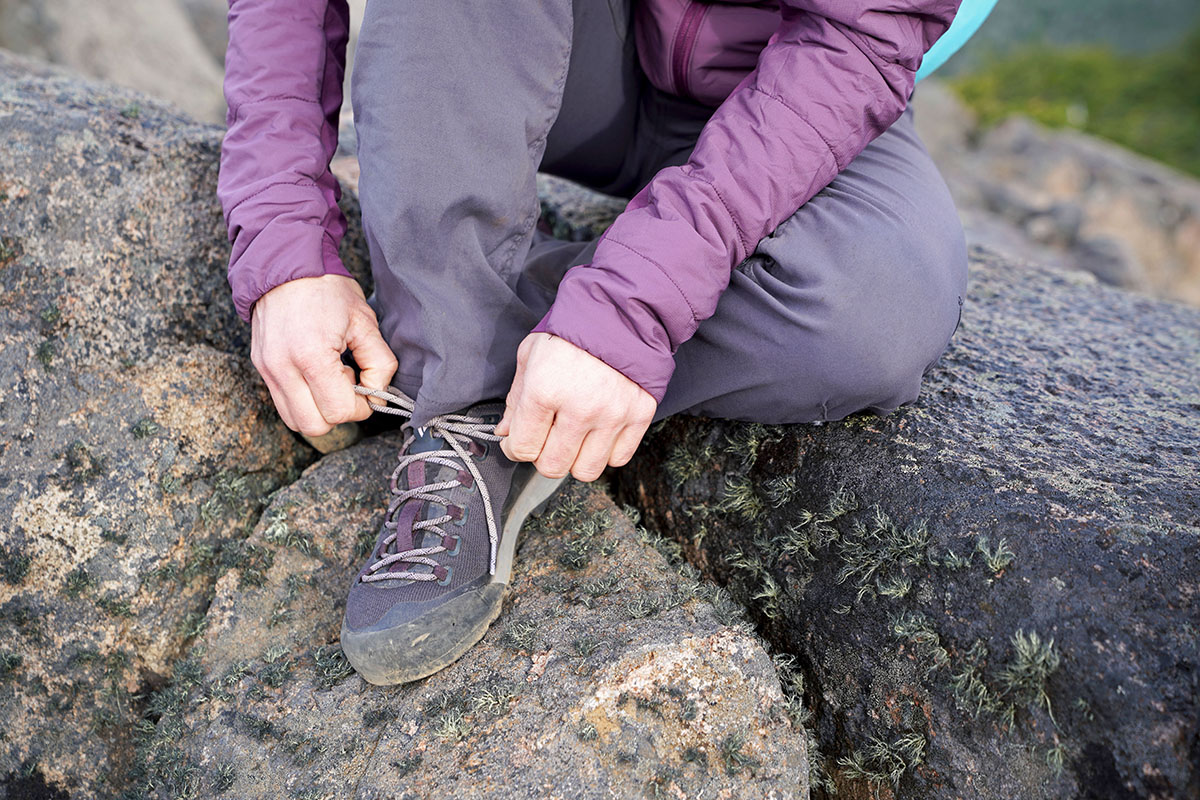
When discussing fit, it’s also important to touch on the Mission LT’s sock-like liner. In general, the liner is great for keeping debris at bay, and I appreciate not having to worry about the tongue slipping to the side. It also allows a very close fit, and it doesn’t hurt that the tie-in points for the laces are anchored deep in the upper (when you tighten the shoe, it secures snugly around the entire foot). That said, there’s one glaring downside to the design: the shoe is not easy to get on. It takes two hands (one on each pull tab) to get my foot into the Mission LT, as well as a good deal of force at the heel. For this reason, I’ve hesitated to bring these shoes to the crag, as I know I’d have to face the tight squeeze multiple times throughout the day. But for long approaches where you put your shoes on and keep them on, this is much less of an issue (after all, that’s what the Mission LT is designed for).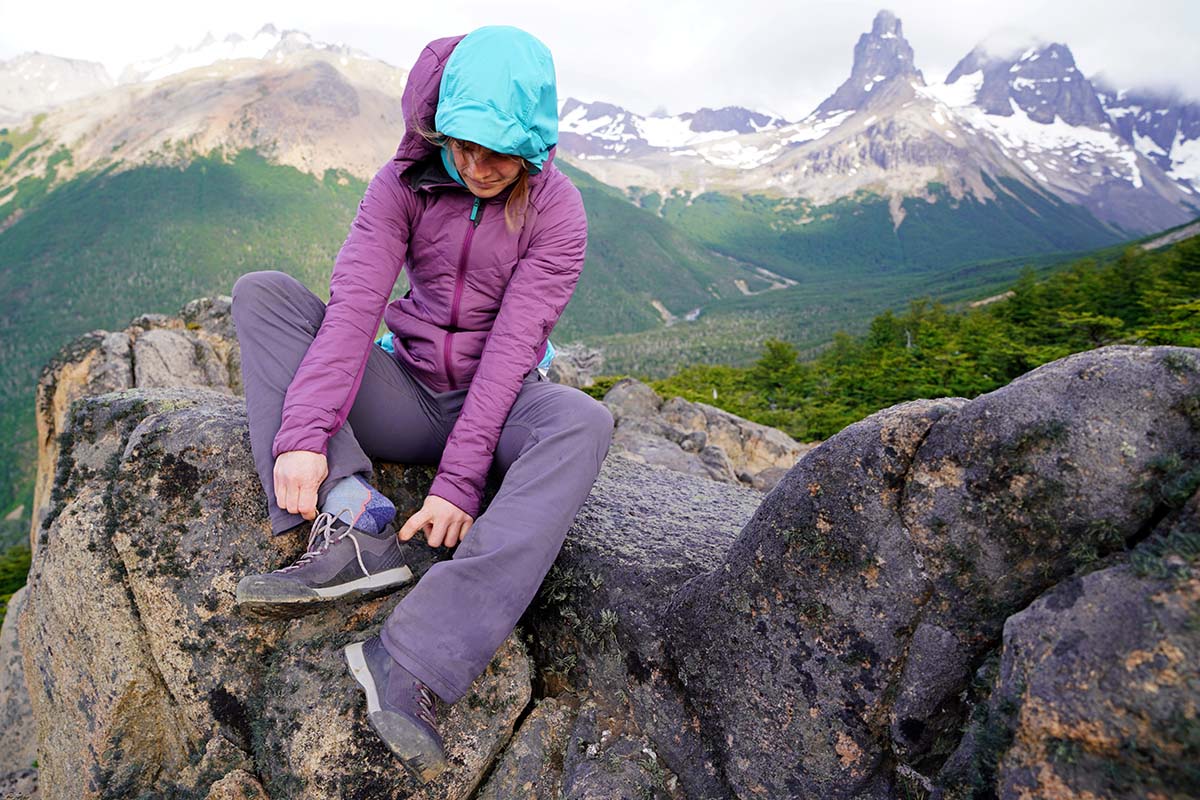
For this review, we tested the women’s Mission LT, and Black Diamond also makes the shoe in a men’s version. The men’s Mission LT clocks in at 1 pound 7.4 ounces for the pair, features an identical design, and comes in two different colorways—grey and blue—while the women’s currently only is offered in purple. It’s important to note that the men’s and women’s shoes are not made on different lasts, which means if the shoe doesn’t fit, you don’t have the ability to choose between two widths (an option with many other approach shoes).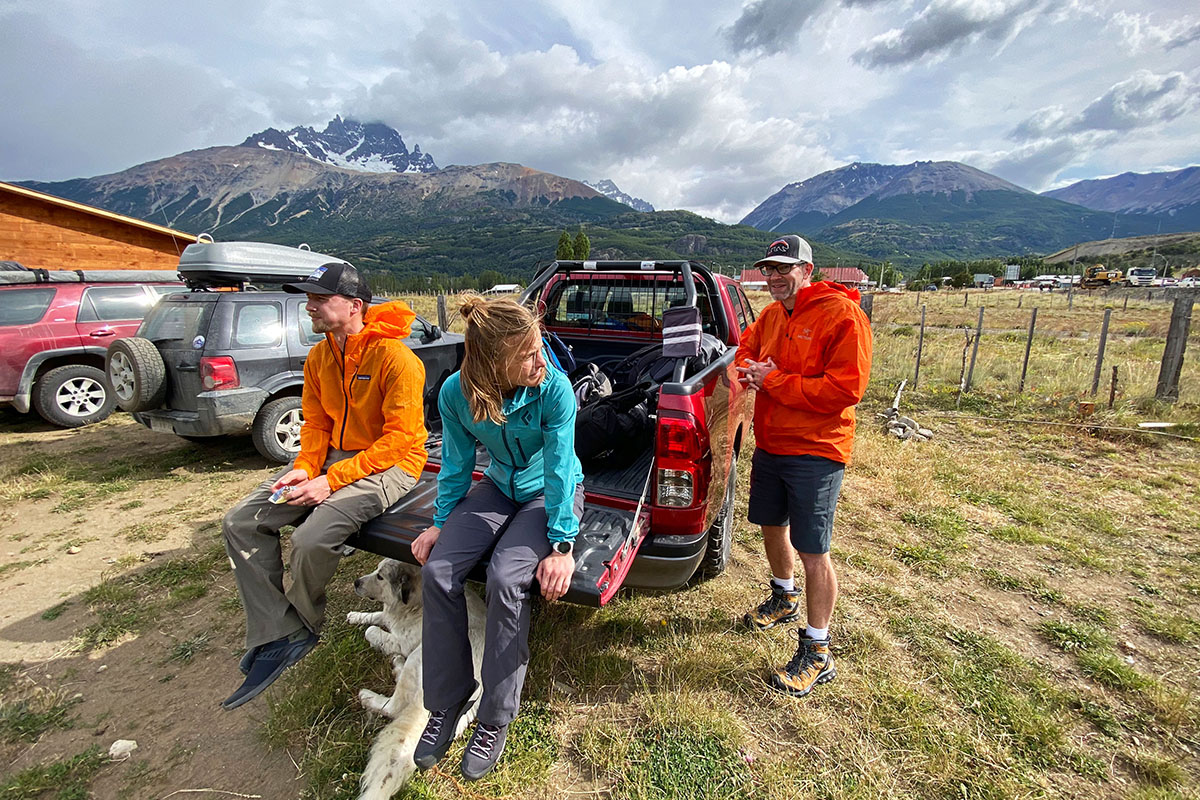
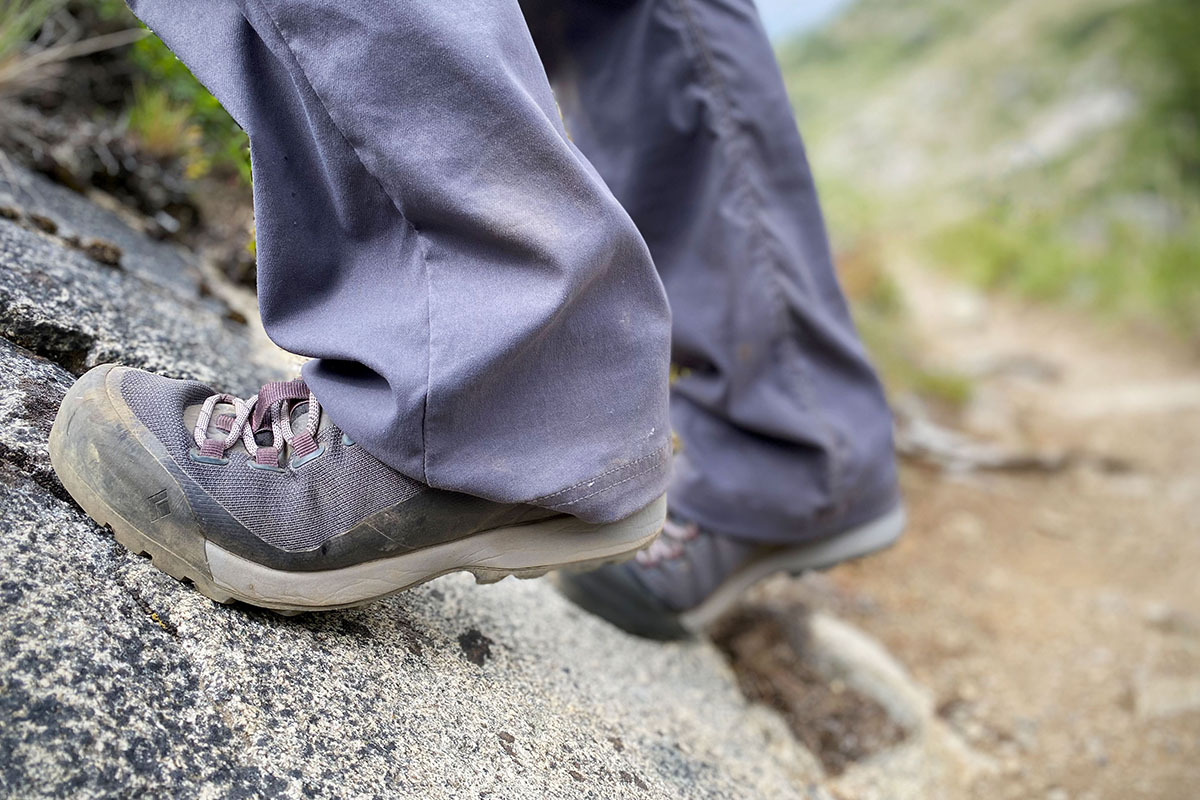
| Shoe | Price | Weight | Upper | Sole | Waterproof |
|---|---|---|---|---|---|
| Black Diamond Mission LT | $140 | 1 lb. 3.9 oz. | Synthetic knit | BlackLabel-Mountain | No |
| La Sportiva TX3 | $135 | 1 lb. 4 oz. | Mesh | Vibram Megagrip Traverse | No |
| Arc'teryx Konseal FL | $155 | 1 lb. 2.4 oz. | Ripstop mesh | Vibram Megagrip | No (available) |
| Black Diamond Technician | $135 | 1 lb. 2.6 oz. | Synthetic knit | BlackLabel-Mountain | No |
| Scarpa Crux | $130 | 1 lb. 6.8 oz. | Suede | Vibram Megagrip | No |
The Mission LT is an impressive and well-rounded addition to the approach shoe market, but it has its fair share of competition. For the past few years, our go-to approach shoes have been from La Sportiva’s TX series, namely the TX3 and TX4. The La Sportiva TX3 is most similar to the Mission LT, combining a mesh upper with a generous rubber rand and sticky rubber sole that is capable both on rock and hardpacked dirt and wet terrain. The shoes clock in at nearly identical weights (the TX3 is 1 lb. 4 oz. for the women’s version) and both prioritize breathability. The Mission LT, however, is more durable, has a slightly wider footbed, and its EnduroKnit upper can handle much more wear and tear than the TX3’s mesh (we’ve had to retire two pairs of TX3s already due to holes in the forefoot). Added up, we think the Black Diamond does a slightly better job balancing hiking performance, breathability, and durability. 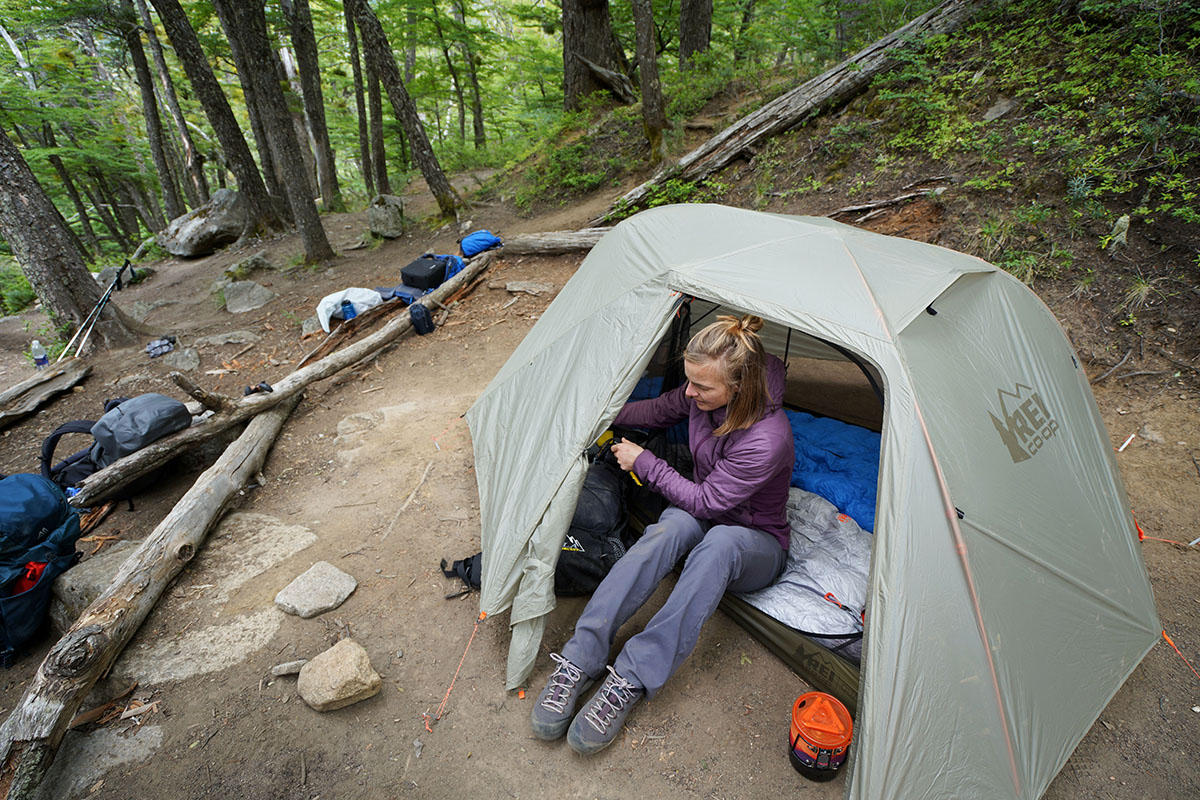
On the other hand, Arc’teryx’s Konseal FL gives the Mission LT a run for its money in almost all aspects. At 1 pound 2.4 ounces for the pair, the Konseal is the lighter shoe but manages to pack in just as much climbing and hiking prowess. The Arc’teryx also uses a synthetic upper, but its ripstop mesh is thinner and dries considerably faster when wet. Both shoes prioritize a close fit, but the Konseal is noticeably narrower and more streamlined in the toe box (similar to the Black Diamond Technician) for more precision on technical rock. All in all, the Konseal FL is better-equipped for steep terrain and 5th-class rock, but the roomier Mission LT offers more comfort on the trail.
As we mentioned above, Black Diamond’s Technician is one of three other models in their approach shoe lineup. Like the Mission, the Technician features an EnduroKnit upper, snug lacing system, and BlackLabel-Mountain rubber on the sole, but the similarities stop there. The Technician, as its name suggests, is built for tackling more technical rock by keeping you close to the ground. To accomplish this, Black Diamond dropped the stack height to 10 millimeters (the Mission LT’s is 15 millimeters), narrowed the heel and forefoot, and flattened the sole of the shoe to boost precision. Further, the sock-like liner is a half rather than full bootie, making the Technician easier to get on and off between pitches (and at only 1 lb. 2.6 oz., it’s a good choice to take up the wall with you). All in all, the Technician is more capable on steeper terrain, but the Mission LT is a better all-rounder and significantly more comfortable for hiking.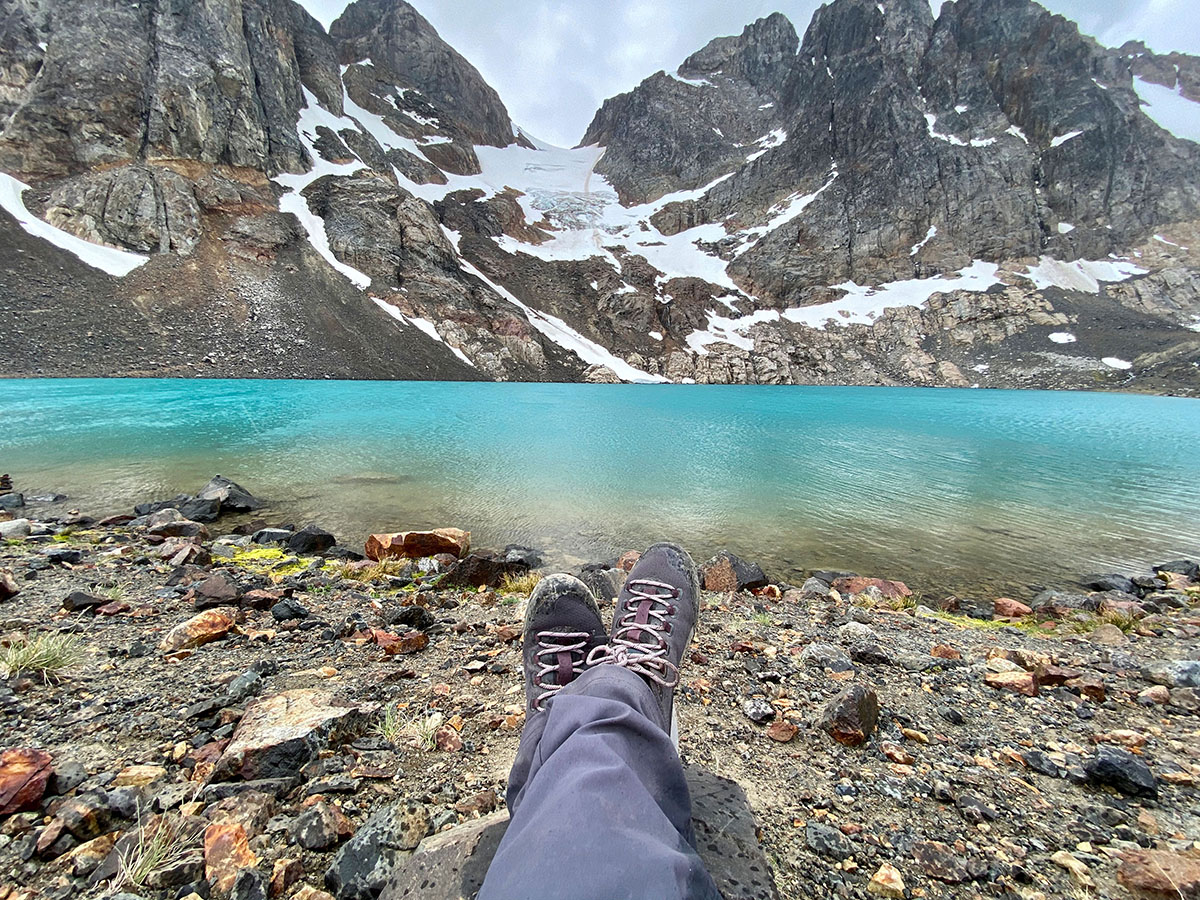
The Konseal FL and Technician both prioritize streamlined and stiff builds for performance while climbing, but if you plan to stick to easier terrain (3rd-class and under), Scarpa’s Crux is an intriguing option. The Crux is built for hiking with a rockered sole, durable suede upper, and significantly more cushion and flex underfoot (it’s also a bit heavier at 1 lb. 6.8 oz.). Leather can be a great choice when it comes to approach shoes—it’s long-lasting, protective, and conforms to your foot—but keep in mind that it’s also heavier and less breathable than synthetic. For a hiking-focused approach shoe, the Crux is an excellent choice, but you’ll probably want to switch to climbing shoes when the terrain gets anywhere near technical.
If you’re thinking about buying gear that we’ve reviewed on Switchback Travel, you can help support us in the process. Just click on any of the seller links above, and if you make a purchase, we receive a small percentage of the transaction. The cost of the product is the same to you but this helps us continue to test and write about outdoor gear. Thanks and we appreciate your support!
Depending on the seller, most products ship free in the United States on orders of $50 or more. International shipping availability and rates vary by seller. The pricing information on this page is updated hourly but we are not responsible for inaccuracies.